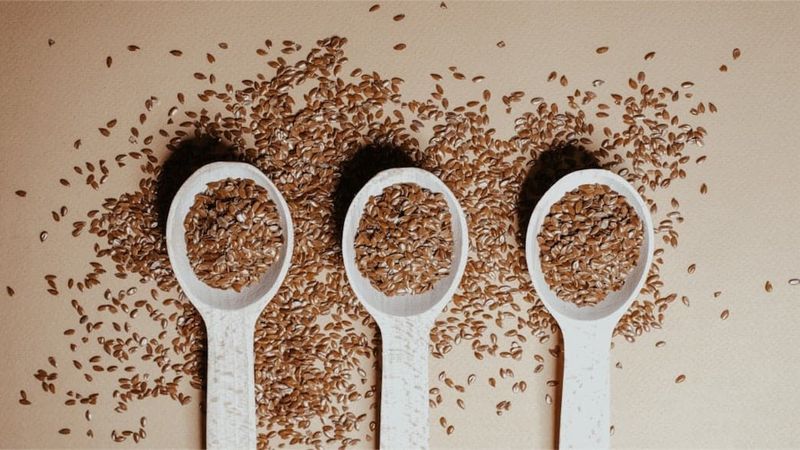

Our Review Process
Our articles undergo extensive medical review by board-certified practitioners to confirm that all factual inferences with respect to medical conditions, symptoms, treatments, and protocols are legitimate, canonical, and adhere to current guidelines and the latest discoveries. Read more.
Our Editorial Team
Shifa Fatima, MSc.
Author
Dr. Apoorva T, MHM.
MEDICAL ADVISOR
Flaxseed For Diabetes - Know Benefits
Insoluble fibre is abundant in flaxseeds. A spoonful of flaxseeds is estimated to contain roughly 3 grams of fibre. Fibre takes years to decompose and digest, which inhibits the absorption of sugar into the bloodstream. Flaxseed diabetes type 2 is the beneficial mixture of its prevention.
| Nutrition | How much it contains |
|---|---|
| Energy | 37.4 calories |
| Protein | 1.28g |
| Fat | 2.95 g |
| Carbohydrate | 2.02 g |
| Fibre | 1.91 g |
| Calcium | 17.8 mg |
| Magnesium | 27.4 mg |
| Phosphorus | 44.9 mg |
Diabetes is now one of the top frequent medical issues globally. Millions of individuals throughout the world suffer from this metabolic condition. It needs to be resolved, so flaxseed and diabetes type 2 and diabetes 1 go hand in hand to solve the problem.
Table of Contents
Benefits of Flaxseed
Cancer
According to recent research, flaxseed may have had a preventive impact on breast cancer, prostatitis, and colorectal cancer. According to Kelley C. Fitzpatrick, head of nutrition and health for the Flaxseed Council of Canada, at least two flaxseed components appear to have a role.
Full of vitamins and minerals
Flaxseed is among the oldest crops on the planet. Brown and golden varieties exist, as these are equally healthy. One serving contains a good quantity of protein, fibre, omega-3 fats and a variety of minerals and vitamins.
Fibre-dense
Merely 1 tablespoon (7g) of ground flaxseed has 2 grams of fibre, and that is approximately 5% and 8% of the per day requirement for men and women, accordingly. Furthermore, flaxseed includes two types of fibre: soluble and insoluble fibre, digested and absorbed in your digestive tract to support gut health by improving bowel regularity.
Improves Cholesterol Level
Flaxseed may also aid in cholesterol reduction. A 12-week study of 112 people with hypertension found that eating 4 tablespoons (30 g) of flaxseed per day significantly reduced BMI, lipid levels, and blood pressure.
Benefits of Flaxseed for Diabetes
1. Flax seeds may help with blood sugar regulation
Sustaining blood sugar control is critical for patients with diabetes, and fibre plays an important role. Flax extracts have been reported as a low-glycemic food due to their high fibre content. This means that eating them will not cause your blood glucose levels to spike but would instead induce them to an "on" position, promoting blood sugar control. Lignans make up a sizable portion of dietary fibre. This summarises your query is flaxseed is good for patients with diabetes.
2. Flax seedlings and flaxseed oil have been shown to improve insulin sensitivity
Insulin hormone controls blood sugar levels. If someone's body has trouble trying to respond to insulin, it will require more of it to lessen your blood glucose levels. This is associated with insulin resistance, a risk factor for developing type 2 diabetes.
3. It may reduce the risk of cardiovascular disease
Diabetes is a cause of cardiovascular disease and stroke, and flax seeds and oil have been shown to better shield against some of these conditions for various reasons, including their fibre, SDG, and ALA content.
4. Flax seeds are very well suited for high fibre content.
Because of the fibre content, the glycemic index of flaxseed is low, which aids in blood sugar control.
5. Researchers discovered that a compound in flaxseed has several benefits in living creatures to type 1 diabetes in the most recent study on 1 diabetes solutions. Improved glucose utilisation in the liver, normalised glucose trying to form action in the liver as well as muscle tissues, and "limited hepatocellular and intestinal galactosidase inhibition activity that also contributes to lower comment blood sugar elevations" are among the benefits.
6. Improves inflammatory reaction, glycaemic control status, and increased lipid peroxidation
Flaxseed had a significant positive impact on glucose control in a study of insulin-resistant patients.
7. Dissolved fibre volume fraction,
especially mucilaginous gums, which also slow nutritional digestion and reduce nutrient absorption
Glycemic Index of Flaxseed
Flaxseed has a glycemic index (GI) of 35, indicating that it is a low-GI food. As it has a low GI, flax seeds are known as a low-glycemic food owing to their high fibre content. This means that eating them will not cause one's blood sugar levels to spike but would instead end up causing people to " to rise steadily, trying to promote blood sugar control.

Different Ways to Consume Flaxseed for Diabetes
1. Banana Seed Smoothie is a delicious way to absorb flax seeds for diabetes.
Blend in 200ml of dairy, 1/2 a date, a banana, flax seeds, and pumpkin seeds. This nutrient-dense smoothie will provide you with essential nutrients. Also read about are dates good for diabetes.
2. Flax and Chia Seed Yoghourt
Purchase some fresh yoghurt. Combine two tablespoons of chia and flax seeds. Take a bite of your creamy yoghurt with a crunchy twist.
Bottomline
To reap the most nutritional benefits from flax seeds, eat them first thing in the morning. You can eat it with your morning tea or mix it into your water. Because flax seeds are high in fibre, they help with digestion and improve digestive system movements in the morning. Hence, flaxseed and diabetes type 2 can be cured with accurate and regular usage. Therefore, this article gives an overall view that flaxseed is good for patients with diabetes along with other health benefits.
FAQs
What are the risks of overconsumption of Flaxseed for patients with diabetes?
Due to the high fibre content of flax seeds, excessive consumption can result in gas, digestive problems, and stomach pain. Those who are also formulated with natural laxatives and consume too much of them can cause diarrhea.
How much Flaxseed should a person with diabetes eat?
A few research findings have also contended that having taken 10-20 grams of flaxseed extract daily helped significantly lower blood sugar levels.
What is the best time to eat Flaxseed?
This works best on an empty belly, so consume it first thing in the morning. That's a healthy and tasty recipe that can easily help you lose weight. This is how to eat flaxseed for diabetes at the best time.
Can I eat boiled flax seeds?
When the seeds are boiled, the fibre softens and is released into liquid, which gels when left to stand. Flax gel is made by boiling flax seeds. Boiling the seeds allows them to be eaten, used during baked goods or cereal, or thrown away.
References
- https://www.healthline.com/nutrition/flaxseed-for-diabetes
- https://pubmed.ncbi.nlm.nih.gov/26561065/
Disclaimer
This website's content is provided only for educational reasons and is not meant to be a replacement for professional medical advice. Due to individual differences, the reader should contact their physician to decide whether the material is applicable to their case.








